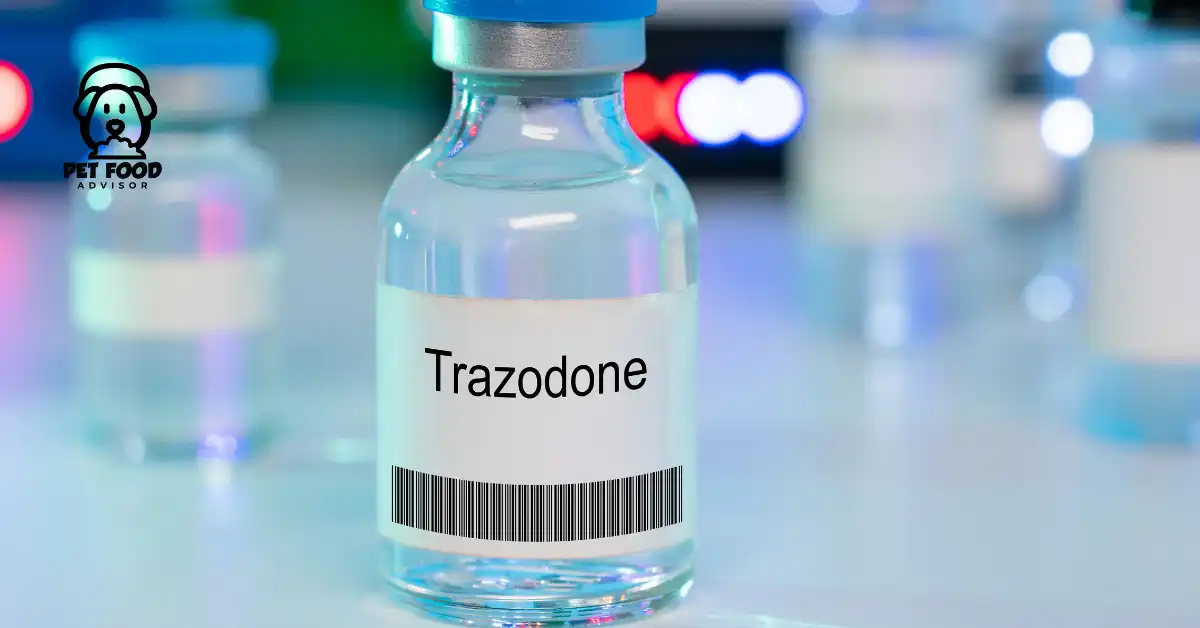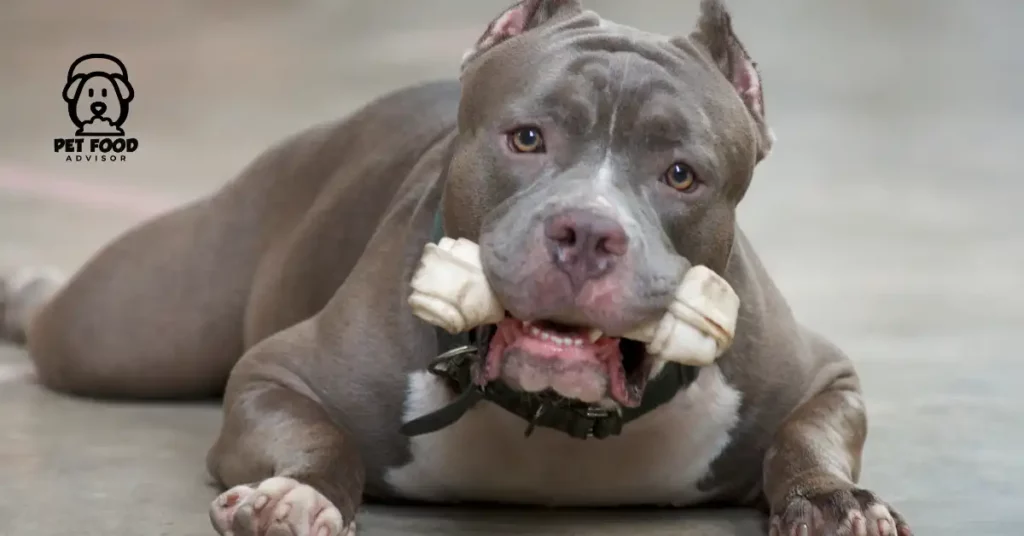A Comprehensive Guide for Pet Owners For Using Trazodone for Dogs
Trazodone is given to your dog when it is in anxiety problems. It is also given when your dog has behaviour issues. It does not behave right and performs actions that are against its nature. When you check your dog with the veterinarian, they may give it to calm down the dog.
Trazodone is an antidepressant drug that helps to improve mood and reduce anxiety in dogs. It is also used in the recovery of surgery and injury. Dogs confined and restricted from exercise while recovering from surgery or injury can benefit from trazodone. It helps them stay calm and reduces their anxiety during this period.
Benefits Of Trazodone In Dogs
There are many benefits of trazodone for dogs. The primary advantage of it is to reduce anxiety and fear in dogs. Dogs experiencing separation anxiety, noise phobias, travel anxiety, or general anxiety due to environmental changes can find relief with trazodone. It helps alleviate their distress, making these situations more manageable.
Can Trazodone be Safely Given to Dogs?
According to the veterinarian’s prescription, trazodone is safe for dogs. You don’t have the right to give it according to your choice. You must check your dog with the vet and then provide it according to their recommendation. It is essential to understand that, like any medication, there are potential risks and considerations to keep in mind.
When you give it to your dog, it is crucial to follow the recommendation of your dog vet. The dose you give to your dog depends upon the breed, weight, and age. It is essential not to adjust the dosage or administration without consulting your vet first. Some dogs may have pre-existing conditions or may be taking medications that could interact with trazodone, so providing a complete picture of your dog’s health is essential.
Times for Giving Trazodone to Dogs
Trazodone can be given to dogs in various situations. It is often given when your dog is in anxiety and depression—the events like thunderstorms. Keeping your dog close to you under this weather is also recommended. When you take your dog to the vet, they feel fear and stress. By administering trazodone before these situations, it can help calm dogs and reduce their anxiety, making these events less stressful for them. Additionally, trazodone may be used with anaesthesia drugs during surgeries or medical procedures. Its calming effects can help keep dogs relaxed and calm during these times, making the operations safer and less stressful for the dog and the veterinary team.
When Trazodone Should Not Be Given to Dogs
Trazodone for dogs can be beneficial in many cases, but there are certain conditions where its use may not be proper or safe for dogs. You should get the trazodone with the proper guidance of the veterinarian. The vet is the only person with the knowledge when giving it to the dogs. Self-administering trazodone or giving it to dogs without professional advice can be potentially harmful.
It should not be administered if your dog has a known allergy or sensitivity to trazodone or similar medications. It is not recommended to live in situations when they are allergic to it. There are many ranges of the allergy. Such s it cause itching and rashes, and it also goes more to these reactions that are severe and also cause breathing difficulty. In these conditions, giving it to your dog is not recommended.
Additionally, trazodone may not be recommended if your dog is currently taking certain medications. Some medicines can interact with trazodone, leading to adverse effects or reduced effectiveness of either drug. Also, if your dog has certain underlying health conditions, trazodone may not be suitable. Dogs with a history of seizure disorders, liver or kidney disease, or heart conditions may require alternative treatment options.
Safe Trazodone Dosage for Dogs
The suitable and safe dose that does not cause any problem is 2 to 3.5 milligrams per pound of the dog’s weight. But it is mainly recommended to give it according to the veterinarian’s prescription because they prescribe according to the breed, weight, and specific issues being treated.
Can Dogs Experience Trazodone Overdose?
An overdose can occur if a dog receives a significantly higher dose of trazodone than recommended. Giving too much trazodone to a dog can overcome its system and lead to adverse effects. Overdose symptoms may include extreme sedation, excessive drowsiness, disorientation, low blood pressure, rapid heart rate, tremors, or seizures. If you suspect that your dog has ingested excessive trazodone or is displaying symptoms of an overdose, it is crucial to seek immediate veterinary care. To prevent overdose on the dogs, it is good to stick to the prescription given to you by the vet.
Side Effects of Trazodone in Dogs
The standard and most side effect of trazodone is drowsiness and sedation in dogs. This side effect is widespread in dogs. The dogs that are under this side effect appear very sleepy or lethargic when they take medicine. This effect is not very dangerous, and it is temporary. But it is essential to monitor the condition and behaviour of your dog and tell the vet if there is some unnecessary behaviour.
Some dogs may experience gastrointestinal upset, such as vomiting or diarrhea, as a side effect of trazodone. These symptoms are generally mild and resolve on their own. Your dog may also change in appetite with the trazodone dose. Some dogs increase the food intake quantity, and some decrease the amount. But you have to maintain the health of your dog.
Sometimes there is a severe side effect of trazodone. These include allergic reactions, difficulty breathing, irregular heart rate, or seizures. If you notice any of these severe side effects, it is critical to seek immediate veterinary attention. Some dogs may not show any side effects, and some dogs show minor and extreme side effects according to their sensitivity.
Timeframe for Trazodone to Calm a Dog
The timeframe for trazodone for dogs to take effect and calm a dog can vary depending on several factors. While trazodone is known to have a relatively fast onset of action, the exact time it takes to calm a dog down can differ from one individual to another. Generally, it can start working within 1 to 2 hours after the dose intake. But it is important to note that the effect of this dose may not be equal or the same in every dog. It depends upon the condition of your dog. It calms your dog according to the situation of the dog.
Some dogs may respond quickly and exhibit noticeable improvements in their behaviour shortly after taking trazodone, while others may take longer to experience its full effects. The time it takes for trazodone to calm a dog down can depend on factors such as the dog’s physiology, the severity of their anxiety or behavioural issue, and the specific circumstances that activate their distress. It is also essential to consider that trazodone works best when used in connection with behavioural modification techniques and training. It is good to tell you that it is not the medicine that cures all problems and removes anxiety and depression in dogs. It is given to manage the symptoms and calm your dog.
Duration of Trazodone in a Dog’s System
Trazodone has a half-life of approximately three to six hours in dogs. Half of the trazodone takes roughly this amount of time to be eliminated from the dog’s body. It typically takes five half-lives for a drug to be eliminated from the system, translating to approximately 15 to 30 hours for trazodone.
It is important to note that even after the drug is no longer detectable in a dog’s system, some residual effects may persist. The calming and sedative effects of trazodone can continue above the time it takes for the drug to be eliminated. This is why it is essential to follow the veterinarian’s instructions regarding dosage and management, as the effects can extend beyond the actual presence of the drug in the body.
Conclusion
Trazodone for dogs can be valuable in managing behavioural and anxiety-related problems. It provides benefits such as reducing anxiety, aiding in behaviour modification, and promoting relaxation. However, it is essential to use trazodone under veterinary guidance and follow the prescribed dosage carefully. Trazodone is most effective when combined with behaviour modification techniques and training. Regular communication with the veterinarian and closely monitoring the dog’s response is essential.





